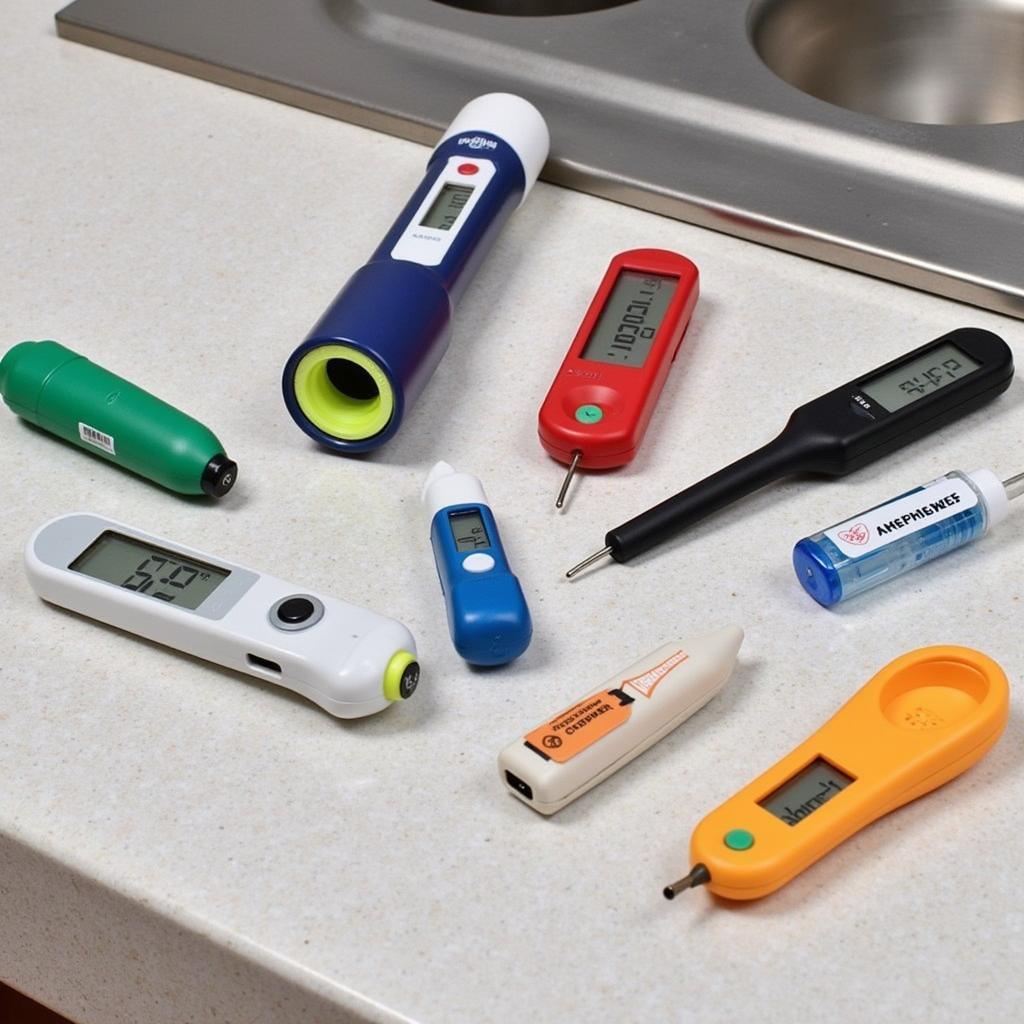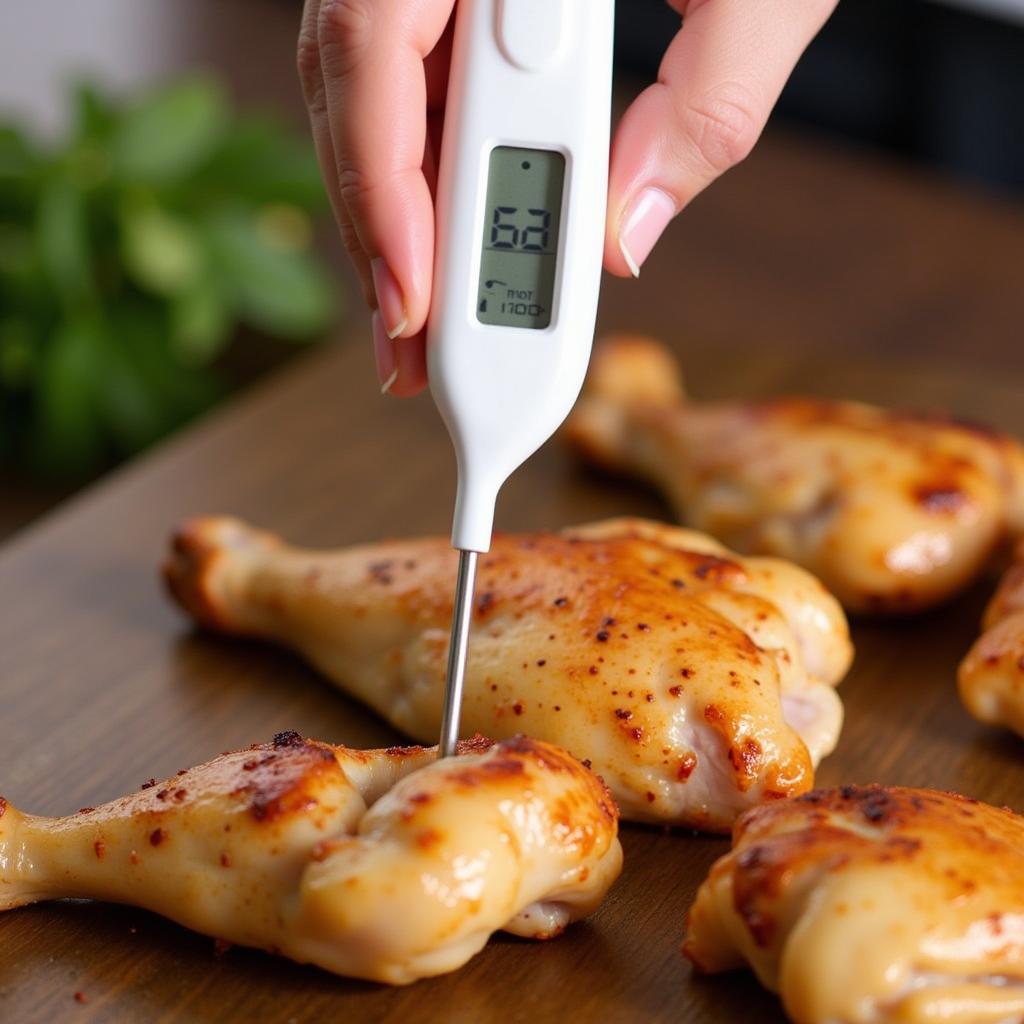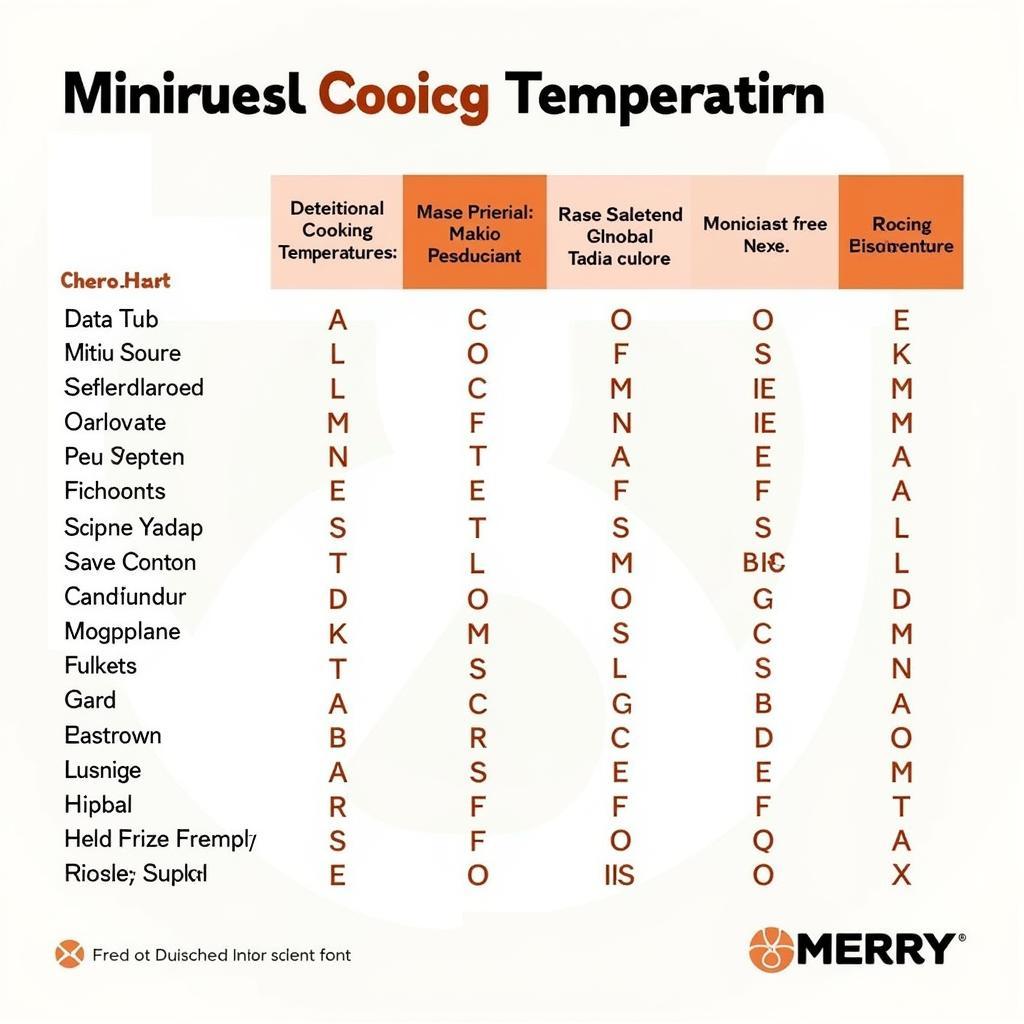Disposable Food Thermometers are an essential tool in any kitchen, professional or home-based. They provide an easy and affordable way to ensure your food is cooked to a safe internal temperature, minimizing the risk of foodborne illnesses. While we often rely on visual cues and time estimates, a food thermometer offers that extra layer of assurance that your meal is both delicious and safe to eat.
Why Use Disposable Food Thermometers?
 Variety of Disposable Food Thermometers
Variety of Disposable Food Thermometers
You might be wondering, why opt for disposable thermometers when reusable options are readily available? Here’s why:
- Hygiene: The single-use nature of these thermometers eliminates the risk of cross-contamination between different foods. This is particularly important when working with raw meat, poultry, and seafood.
- Convenience: No need for washing or sanitizing after use. Simply dispose of the thermometer after checking your food’s temperature.
- Cost-effective: Disposable food thermometers are generally inexpensive, especially when purchased in bulk.
- Portability: Their compact size makes them ideal for camping trips, picnics, and other outdoor cooking adventures.
Choosing the Right Disposable Food Thermometer
 Reading a Disposable Food Thermometer
Reading a Disposable Food Thermometer
Not all disposable food thermometers are created equal. Here are some factors to consider when selecting the right one for your needs:
- Temperature Range: Ensure the thermometer covers the temperature range required for the foods you typically cook. Most disposable options range from 100°F to 220°F, which is suitable for most meats.
- Accuracy: Look for thermometers with clear markings and a +/- 2°F accuracy for reliable readings.
- Reading Time: Some thermometers offer faster readings than others. Consider how quickly you need the temperature reading.
- Material: Disposable food thermometers are typically made from food-grade plastic or cardboard. Choose a material that aligns with your preferences and intended use.
How to Use a Disposable Food Thermometer
Using a disposable food thermometer is simple and straightforward:
- Insert the Thermometer: Carefully insert the thermometer’s probe into the thickest part of the food, avoiding any bones or gristle.
- Wait for the Reading: Allow the thermometer to sit for the recommended time specified on the packaging. This is typically a few seconds.
- Check the Temperature: Compare the reading on the thermometer to a reliable food safety chart to ensure your food has reached a safe internal temperature.
- Dispose of the Thermometer: Safely discard the thermometer after a single use.
Understanding Safe Cooking Temperatures
 Food Safety Temperature Chart
Food Safety Temperature Chart
Cooking food to the right temperature is crucial in destroying harmful bacteria and preventing foodborne illnesses. Here’s a quick reference guide:
- Poultry (whole or ground): 165°F
- Beef, Pork, Veal, Lamb (steaks, roasts, chops): 145°F
- Ground Meats (beef, pork, veal, lamb): 160°F
- Fish: 145°F
- Leftovers: 165°F
“Investing in reliable disposable food thermometers demonstrates a commitment to both culinary excellence and the well-being of those enjoying your creations,” says renowned Chef Anthony Moreau, highlighting the importance of accurate temperature control in professional kitchens.
Beyond the Basics: Tips for Best Results
- Calibrate your thermometer: While disposable thermometers are pre-calibrated, it’s always a good practice to double-check accuracy. To do this, submerge the thermometer in a glass of ice water for 30 seconds. It should read 32°F.
- Avoid touching the probe: Handle the thermometer by the handle only to prevent transferring heat and affecting the reading.
- Rest your meat: Allow cooked meat to rest for a few minutes before carving. This allows the juices to redistribute, resulting in a juicier and more flavorful final product.
Conclusion
Disposable food thermometers are an indispensable tool for anyone who cooks, ensuring food safety and delivering perfectly cooked meals every time. Their affordability, hygiene benefits, and ease of use make them a practical addition to any kitchen arsenal. By incorporating a disposable food thermometer into your cooking routine, you can confidently serve dishes that are both delicious and safe for everyone to enjoy.
FAQs about Disposable Food Thermometers
1. Can I reuse a disposable food thermometer?
No, disposable food thermometers are designed for single use only. Reusing them can compromise hygiene and accuracy.
2. Where can I buy disposable food thermometers?
You can find them at most grocery stores, kitchen supply stores, and online retailers.
3. Are there different types of disposable food thermometers?
Yes, they come in various forms, including probe thermometers, pop-up timers, and indicator strips. Each type has its own advantages and limitations, so choose based on your needs.
4. How do I know if my disposable food thermometer is accurate?
You can test its accuracy by submerging it in ice water for 30 seconds. It should read 32°F.
5. Can I use a disposable food thermometer for liquids?
Yes, you can use them to check the temperature of soups, sauces, and other liquids. Just ensure the probe is fully submerged.
Need more information on maintaining a hygienic kitchen environment? Learn more about the importance of a food grade mop in preventing cross-contamination.
For further assistance with food safety practices or any culinary inquiries, please don’t hesitate to contact us. Call us at 02437655121, email us at minacones@gmail.com or visit us at 3PGH+8R9, ĐT70A, thôn Trung, Bắc Từ Liêm, Hà Nội, Việt Nam. Our dedicated customer support team is available 24/7 to assist you.